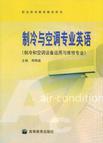制冷与空调专业英语
2005-6
人民邮电出版社
杨晓翔
193
300000
随着国民经济的快速增长和人民生活水平的不断提高,制冷与空调技术应用的普及,相关的专业资料,特别是英语专业文献日益增多,开设本专业的专业英语课程已成为各类院校的共识。制冷与空调专业英语的教学以培养学生专业英语的阅读能力、熟悉和掌握本专业的专业词汇和专业术语为主要目标,同时加强基础知识,深化专业内容,扩大知识面,提高专业英语的阅读能力和翻译能力。 本教材适用于高职高专院校、中等职业学校制冷与空调专业学生使用,同时可供本专业的各类公司培训使用,对本专业的工程技术人员也有较大的参考价值。 本教材共分5个单元,计18篇课文,19篇阅读材料。 本教材的参考学时为40~80学时。 编写过程中,本教材力求体现以下特色: 1.反映现代制冷与空调专业中的最新成果。课文及阅读材料均选自近年来英、美等国出版的文献资料以及本专业国际著名公司的技术培训资料。 2.理论联系实际。本教材着重介绍设备与系统、安装与操作及维护中出现的专业俗语、术语、缩略语、简称和专业名称,以及上述专业用语的含义。本教材中选用了较多的设备外型和内部结构插图,使学生建立较直观的概念,由表及里,既便于课堂教学内容的理解,又便于由外观辨认、实际工作中应用。 3.本教材注重英语语言教学、专业内容教学的两个方面,避免专业英语教材中科普化、泛泛而谈的教学内容。在课文与阅读材料的选编过程中,编者对其中涉及的英语语法现象以科技英语中常见的、与学生的英语基础相一致为取舍原则。对专业内容的取舍则以专业课程的教学大纲为参照。从专业内容来说,本书也是一本教学内容较完整的专业教材,可使学生了解国外相关的专业理论与实践,了解英、美国家文献资料中论述的专业标准与现行规范、操作规程,学生在毕业或培训后可较快地应对实际工作中的问题。 4.避免较大篇幅论述翻译的基本理论与方法,而是有意识地针对专业英语中常见句型、短语及其翻译方法,在课文注释中选择课文中出现的例句做出解释,并论述其翻译、处理方法。为便于学生对原文的理解,教材中的例旬和参考译文多采用相对直译的方式。
本书是根据高职高专制冷与空调专业专业英语教学方案的基本事求编写的。全书共设制冷基础、压缩系统与压缩机、自动控制与应用、家用冰箱与商业系统、空调系统5个单元,共计18篇课文。本教材着重介绍设备与系统、操作、安装及维护中出现的专业惜语、术语、缩略语、简称和专业名称,以及上述专业用语的含义。本教材中选用了较多的设备外型和内部结构插曲,便于学生建立较直观的概念。 本教材注重英语语言教学、专业内容教学两方面。教材中出现的英语语法现象及词汇与学生的英语基础相衔接,并针对课文中出现的常见句型、短语,论述其理解、翻译与处理方法。专业内容则根据专业特征,较完整地论述了专业教学中的主要的、实用方面的内容。此外,从深化专业教学内容、扩大知识面的目的出发,教材中编人了英美国家最新的专业标准与现行规范、操作规程,使学生在毕业或培训后可较快地应对实际工作中的问题。 本教材适用于高职高专院校、中等职业学校制冷与空调专业学生使用,同时可供本专业的各类公司培训使用,对本专业的工程技术人员也有较大的参考价值。
Unit t Fundamentals of Refrigercrtion. Text 1: History of Refrigeration and Air Conditioning Supplementary Reading: Refrigeration Text 2: Heat and Temperature Supplementary Reading (1): Heat Transfer Supplementary Reading (2): Sensible Heat, Latent Heat and Specific Heat Text 3: Pressure Supplementary Reading: Pressure and Temperature Relationship Unit 2 CompressJon System and Compressors Text 4: The Refrigeration Process Supplementary Reading: Refrigeration and Air Conditioning Text 5: Refrigerants Supplementary Reading: Refrigeration Oil Text 6: The Compressors Supplementary Reading: Refrigerator's Lubrication Text 7: The Evaporator and Condenser Supplementary Reading: Cooling Towers and Pumps Text 8: The Refrigerant Metering Device Supplementary Reading: Refrigeration Accessories Unit 3 Automatic Control Components and Applications Text 9 : The Fundamentals of Electrical Circuit Supplementary Reading: Motor Start Relay Text 10 : Semiconductors Supplementary Reading: Printed Circuit Boards and Integrated Circuits Text 11 : Introduction to Automatic Controls Supplementary Reading: Temperature Control Principle Text 12 : Electric Circuit--Complete Wiring Diagram Supplementary Reading: Troubleshooting Basic ControlsUnit 4 Domestic Refrigerators- Freezers and Commercial Systems Text 13 : Domestic Refrigerators Supplementary Reading: Domestic Freezers Text 14 : Commercial Refrigeration Systems Supplementary Reading: Walk-in Refrigerators Text 15 : Truck Refrigeration Systems Supplementary Reading : Quick Freezing MethodsUnit 5 Air Conditioning System Text 16 : Air Conditioning Supplementary Reading: Atmosphere Cooling Text 17 : Window Units Supplementary Reading: Heat Pumps Text 18 : Central Air Conditioning Systems Supplementary Reading: Chilled Water Systems参考译文词汇表参考文献
Heat and Temperature The laws of thermodynamics can help us to understand what heat is all about. One ofthese laws states that energy can neither be created nor destroyed, but can he converted fromone form to another. This means that most of the heat the world experiences is not being con-tinuously created but is being converted from other forms of energy like fossil fuels (gas andoil). This heat can also be accounted for when it is transferred from one substance to another. The term used to describe the quantity of heat or heatcontent is known as the British thermal unit (Btu). Thisterm explains how much heat is contained in a substance.The Btu is defined as the amount of heat required to raisethe temperature of 1 lb of water 1 F. For example, When 1lb of water is heated from 68~F to 69~F, 1 Btu of heat energyis absorbed into the water. In the metric or SI system of measurement, the termjoule (J) is used to express the quantity of heat. Because aioule is very small, metric units of heat in this industry areusually expressed in kilojoules (kJ) or 1 000 joules. One Btuequals 1. 055 kJ. Temperature can be thought of as a description of the level of heat. Temperature also is referred to as heat intensity. Both heat level and heat intensity should never be confused with theamount of heat, or heat content. Heat can he thought of as energy in the form of molecules inmotion. The starting point of temperature is, therefore, the starting point of molecular mo-tion.
